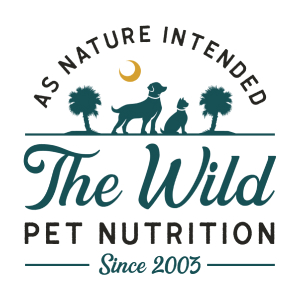Improper Nutrition in Pets: Side Effects & Prevention

Just as it is in humans, nutrition is the foundation for optimal health in our pets. In order to be sure your pet is getting the proper nutrition, you need to go beyond looking at the front of a bag or can of pet food and take a look at the ingredients. See our page on Substandard Ingredients to see a list of ingredients you don’t want to find in pet foods.
Desirable ingredients to look for are ones with recognizable names, such as named meats (Chicken, Beef, etc.), whole fruits and vegetables, vitamins, and minerals.
Early warning signs of improper nutrition are itchy red skin, excess shedding, dandruff, oily coat, runny eyes, licking and chewing on paws, and red, itchy ears.
Not only are many commercial pet foods made with nutritionally depleted and inferior ingredients, but many pets are fed the exact same diet day after day for their entire lives. This can result in weakened immune systems and sick pets with a host of increasingly common maladies, such as obesity, diabetes, canine candida, arthritis, and cancer, just to name a few.
Why Do I Need to Look So Closely at My Pet’s Food?
- The process of recycling waste from the livestock and human food industries is known as rendering and this process can involve the use of dead, dying, diseased, and disabled livestock as well as human leftovers, such as restaurant grease and out-of-date supermarket meats. Rendering facilities can become a catch all for this waste, including roadkill, the remains of euthanized animals, and all the pharmaceuticals, pesticides, and other chemicals that are inherent in these “ingredients.” The process of rendering yields two products that can be included in pet food: “Animal fat” and “Meat Meal” or “Meat by-product meal.”
- Ambiguously labeled ingredients in pet food can be an indicator of these sorts of inferior and poorly sourced meats, fats, and by-products.
- Many commercial, processed pet food manufacturers look for ways to lower the cost of production and boost their bottom line by padding their foods with cheap filler ingredients which can misrepresent the actual nutrition in the food. Counting biologically inappropriate corn and soy proteins as part of the crude protein yield is one such way this can be done. Excessive use of grains and other starches is another way to decrease costs and, unfortunately, compromise your pet’s health.
- The costs of improper nutrition can be very high, ranging from the costs of high vet bills and medications to a pet’s poor quality of life. Constant scratching from allergies to ingredients and canine candida, sore joints, and lethargy are just a few of the symptoms from the issues arising out of poor nutrition that affected pets may experience.
How Can I Prevent Common Maladies and High Vet Bills?
- Make sure protein is truly the foundation of your pet’s food and daily diet. Feeding a raw food diet, such as Steve’s Real Raw Food, K9 Kravings, Answers, Primal, Tucker’s or Stella & Chewy’s Raw Diet is a great way to ensure your pet is getting proper nutrition.
- Don’t be afraid to offer your pet different proteins and vegetables. Variety not only keeps pets interested in their food, but they will receive a wider variety of nutrients this way. This well-rounded approach to nutrition will support a healthy, strong immune system.
- Do your own research! Be sure you are feeding a wholesome diet, manufactured by a reputable company using only premium quality and responsibly sourced ingredients. A good healthy diet, plenty of exercise, and lots of attention and love is a good recipe for spending many wonderful years with your pet.


